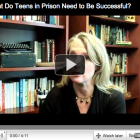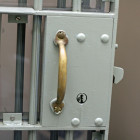
What do Teens in Prison Need to be Successful?
|
Imagine being ripped from your safe, normal professional life and thrust into federal prison for a year, for something stupid you did when you were a teenager, or even a young adult.
Piper Kerman doesn't have to imagine it, because that's exactly what happened to her. She was locked up in a federal prison at age 34 for a drug crime she committed in her early 20s. Because Kerman spent a year living in close quarters with many women, including 18- and 19-year-old girls, she has an unusual, nearly first-hand perspective on what teens in prison need to be successful. Here's her suggestions about what they need:
Positive attention. Kerman found the teens in particular were incredibly responsive to positive attention, creating significant opportunities for change -- opportunities that were often missed.





